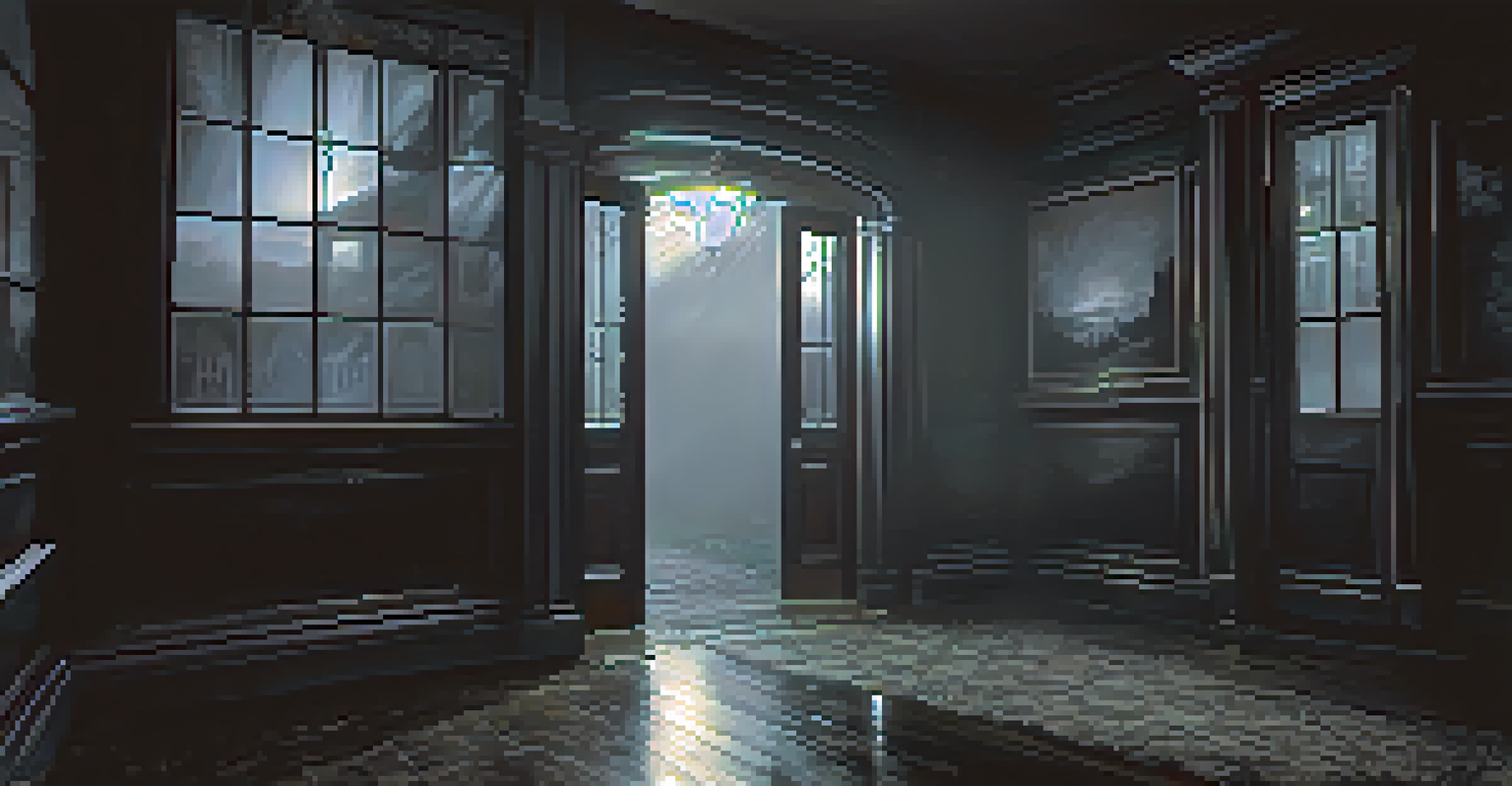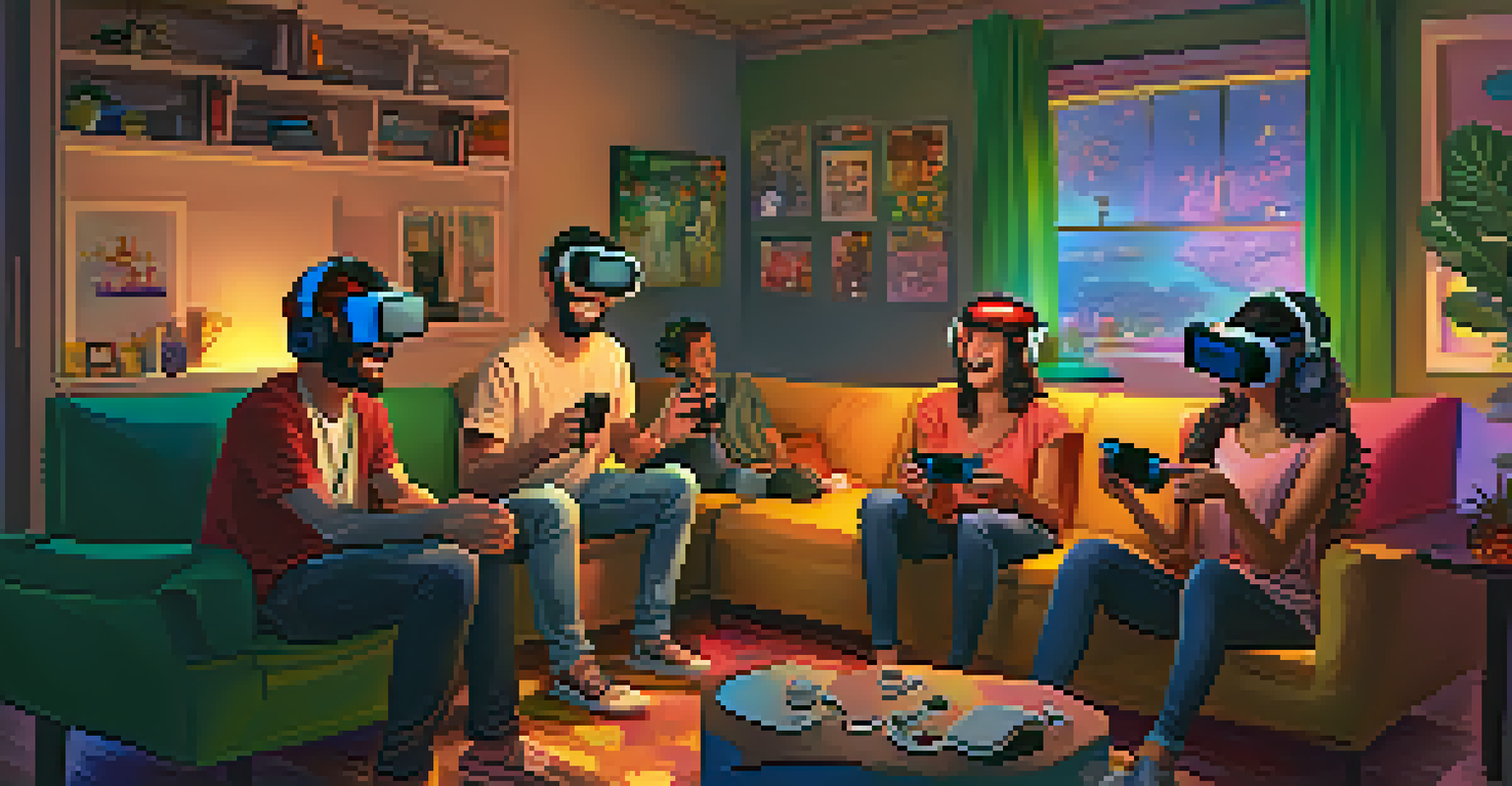Virtual Reality in Hollywood: A New Frontier for Filmmakers

Understanding Virtual Reality: The Basics for Filmmakers
Virtual reality (VR) immerses users in a 3D environment, allowing them to interact with digital worlds. Unlike traditional films, which are largely a one-way experience, VR invites viewers to step into the story, making them an active participant. This shift in storytelling opens new avenues for filmmakers to explore creative narratives.
Virtual reality is not just a new way to tell stories; it’s a new way to experience them.
As filmmakers step into this realm, they realize that VR isn’t just about cool graphics; it’s about crafting experiences that engage the audience on a deeper emotional level. Imagine watching a suspenseful thriller where you are not just a spectator but a character navigating through the plot. This interactivity can lead to a more profound connection with the story.
However, diving into VR requires a new skill set and understanding of technology. Filmmakers must learn to design for 360-degree visuals and spatial audio, which can be quite different from traditional filmmaking techniques. As they adapt to these challenges, the potential for groundbreaking storytelling becomes limitless.
The Evolution of Virtual Reality in Film Production
Virtual reality has gradually evolved from a niche tech concept to a significant player in the film industry. Early adoption was met with skepticism, but recent advancements in technology have helped bridge the gap between imagination and reality. Today, VR is being utilized not just in film, but also in marketing and promotional strategies.

One notable example is the use of VR in movie trailers, allowing fans to experience a sneak peek of films in an immersive way. Instead of just watching a trailer, audiences can explore the film’s universe, interacting with characters and settings, which builds excitement and anticipation. This innovative approach can attract a broader audience and create buzz around releases.
VR Transforms Filmmaking Narrative
Virtual reality enables filmmakers to create immersive, interactive experiences that invite viewers to become active participants in the story.
Moreover, established studios are beginning to invest in VR projects, indicating a growing acceptance of this medium. With big names like Disney and Warner Bros. exploring VR, it's clear that the film industry is embracing this new frontier, paving the way for future filmmakers to innovate.
How VR Enhances Storytelling Techniques in Film
In traditional filmmaking, the director controls what the audience sees, guiding their emotions through camera angles and cuts. In VR, however, the viewer has the power to explore the scene at their own pace, which can transform storytelling dynamics. This shift allows filmmakers to experiment with non-linear narratives, creating an experience that feels personal and unique for each viewer.
The future of storytelling is immersive and interactive, and that future is now.
For instance, consider a horror film where the viewer can choose to enter different rooms of a haunted house, each containing different scares or story elements. This level of engagement can lead to multiple experiences of the same film, encouraging rewatching and deeper exploration of the story. It’s a game changer for how narratives can be crafted and experienced.
Filmmakers are also utilizing VR to evoke emotions in ways that were previously impossible. By placing viewers in the midst of a dramatic scene, they can feel the tension, excitement, or fear more intensely. This new method of engaging viewers can lead to a stronger emotional response and a more memorable cinematic experience.
The Role of Technology in VR Film Production
The integration of technology is crucial in the production of VR films. Filmmakers now have access to sophisticated VR cameras and editing software that allow for the creation of immersive content. These tools enable the capture of 360-degree footage, which is essential for building the virtual environments that audiences can explore.
Additionally, advancements in sound design are equally important. Spatial audio technology creates a more realistic experience, allowing viewers to hear sounds coming from specific directions, enhancing the feeling of presence within the virtual world. This attention to detail can significantly elevate the viewing experience.
Technology Enhances VR Production
Advancements in VR technology, such as 360-degree cameras and spatial audio, allow filmmakers to craft detailed and engaging virtual environments.
However, with great technology comes the responsibility to use it wisely. Filmmakers must balance the use of cutting-edge tools with the fundamentals of storytelling, ensuring that technology serves the narrative rather than overshadowing it. This requires a thoughtful approach to production that blends creativity with technical prowess.
Challenging Traditional Filmmaking Techniques with VR
Virtual reality challenges traditional filmmaking techniques, pushing creators to rethink their approach. For example, the use of cuts and transitions in conventional films may not work well in a VR environment. Instead of cutting from one scene to another, filmmakers often opt for seamless transitions that maintain immersion and keep viewers engaged.
Moreover, the concept of framing changes in VR. In a traditional film, the director carefully frames each shot to guide the viewer's attention. In VR, viewers can look anywhere, so filmmakers must create environments that naturally draw attention to key elements of the story. This requires a shift in how scenes are constructed and presented.
This shift can be daunting for some filmmakers, as it requires them to step out of their comfort zones. However, embracing these challenges can lead to innovative storytelling that pushes the boundaries of what cinema can be. As filmmakers experiment with these new techniques, they contribute to an evolving landscape of storytelling.
Audience Engagement: How VR Changes Viewer Interaction
One of the most exciting aspects of virtual reality is how it alters audience engagement. In traditional cinema, viewers are passive observers, but VR transforms them into active participants within the story. This unique interaction can deepen their investment in the narrative and characters, creating a memorable experience.
For example, consider a VR experience where viewers can choose their path through a story, affecting the outcome based on their choices. This level of interactivity not only increases engagement but also fosters a sense of ownership over the experience. Audiences are more likely to discuss and share their unique journeys, expanding the film's reach.
Future of VR in Hollywood
The growing acceptance of VR technology presents filmmakers with the opportunity to redefine storytelling and create deeper connections with audiences.
As filmmakers tap into this potential, they must also consider the importance of user experience. Ensuring that interactions feel natural and intuitive is vital for maintaining immersion. When audiences feel comfortable and engaged, they are more likely to fully explore the VR experience, leading to richer storytelling.
The Future of Virtual Reality in Hollywood
As we gaze into the future, the potential for virtual reality in Hollywood seems boundless. With technology continuing to advance and audiences becoming more receptive to immersive experiences, filmmakers have an unprecedented opportunity to redefine storytelling. Imagine a world where VR films are as common as traditional films, captivating audiences in ways we can only begin to imagine.
Moreover, the integration of VR into everyday life, such as gaming and social media, is paving the way for broader acceptance of this medium. As people become more accustomed to VR experiences, the demand for innovative content will likely rise. This shift may prompt more filmmakers to explore VR, leading to a vibrant community of creators pushing the limits of imagination.

Ultimately, the future of virtual reality in Hollywood is not just about technology; it’s about the stories we tell and how we connect with audiences. As filmmakers embrace this new frontier, they have the chance to create experiences that resonate on a deeper level, transforming the film industry for generations to come.